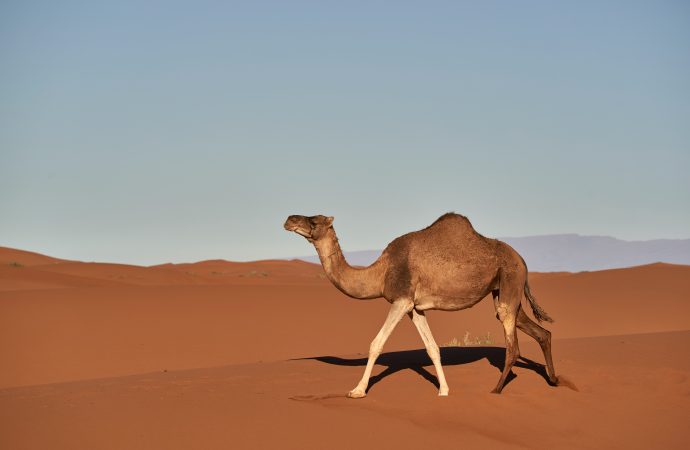Camels are not just fascinating animals, they also have complex social lives in the wild. These creatures, known for their stoic nature, are social animals that form strong bonds with other camels, communicate with each other, and even have their own hierarchies. In the wild, camels are usually found in small groups known as “caravans”.
Camels are not just fascinating animals, they also have complex social lives in the wild. These creatures, known for their stoic nature, are social animals that form strong bonds with other camels, communicate with each other, and even have their own hierarchies.
In the wild, camels are usually found in small groups known as “caravans”. These groups are typically made up of females and their young, with a dominant male acting as the leader of the group. The male camel is responsible for defending the group from predators and other threats, and is often the one who leads the group to food and water sources.
Camels have a unique way of communicating with each other. They make a range of vocalizations, from grunts and moans to deep groans and high-pitched whistles. These sounds can be used to convey a range of messages, including warning others of danger, calling for mates, or simply maintaining contact with other members of the group.
In addition to vocalizations, camels also use body language to communicate with each other. For example, they will raise their heads and stand tall to signal dominance, or lower their heads and ears to signal submission. They will also nudge and push each other, and even spit to show aggression or annoyance.
Camels also have their own hierarchies within their groups. The dominant male is usually at the top of the hierarchy, with the females and young following behind. The dominant male will often get first access to food and water, and will mate with the females in the group.
Despite their social nature, camels are also very independent animals. They are capable of traveling long distances on their own, and can survive for extended periods of time without water. This independence is an important adaptation for life in the desert, where resources can be scarce and unpredictable.
Unfortunately, camels in the wild face numerous threats. Habitat loss, climate change, and overhunting are all taking a toll on wild camel populations around the world. In addition, camels are sometimes used in tourism or for their meat, milk, or hides, which can lead to overexploitation of these animals.
As we continue to learn more about the fascinating social lives of camels in the wild, it is important that we work to protect and conserve these animals. This means supporting conservation efforts that aim to protect camel habitats, and advocating for responsible tourism practices that do not harm wild camel populations.
In conclusion, camels are not just solitary creatures, but have complex social lives in the wild. Their social behavior includes forming groups, communicating through vocalizations and body language, and maintaining hierarchies within their groups. As we strive to protect and conserve wild camel populations, it is important to appreciate the fascinating social lives of these animals and work to ensure that they can continue to thrive in the future.

















Leave a Comment
Your email address will not be published. Required fields are marked with *